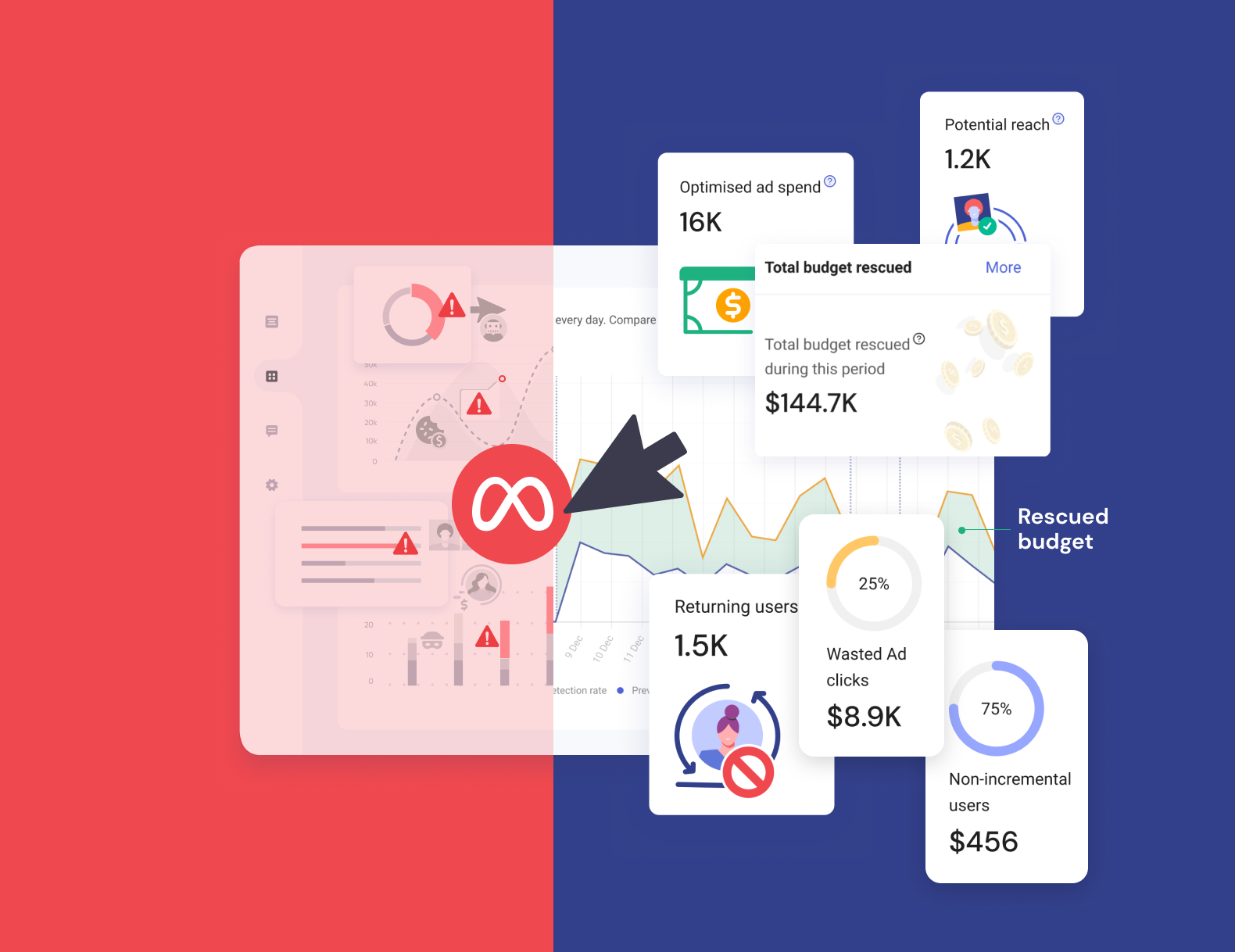Schooling up on invalid traffic in the education sector

How ad fraud affects higher education and adtech marketing budgets, and what they can do to stop it.
What’s really going on with tertiary education PPC campaigns?
The average cost per acquisition (CPA) in the tertiary education sector currently stands at $1985 per student—meaning every student who enrols at an institution has had nearly $2k of advertising and engagement outlayed to get them there. That’s a massive number, and beats the CPAs of infamously costly industries such as financial services, aerospace and defence, and legal services.
Add to this declining enrollment numbers, competition between institutions for a shrinking pool of candidates, and subsequent rising enrollment targets for student acquisition teams, and you’re looking at hefty paid media budgets which need to work overtime. Described by The Guardian as a “cut-throat recruitment climate”, some universities in the UK alone are spending millions of pounds per year on digital advertising across social and search engine channels to try and entice new students.
It makes sense though, right? The lifetime value of a single student can be in the tens of thousands, so the high amounts spent on driving enrollment are thought to be well-recouped over the course of their attendance.
But what if we told you that only a fraction of that ad budget was actually spent on attracting new students? And that millions of dollars of ad spend globally was going straight into the pockets of fraudsters? That CPA ain’t looking so healthy now.
High spend attracts advertising adversaries, making the tertiary education sector a hot spot for fraud, for all the reasons we’ve just discussed. Join us as we explore some of the specific ways higher education institutions are affected by traffic from invalid sources, the effects of this invalid traffic (IVT), and the ways they can banish the bots and one-up competitors.
First things first, what is click fraud?
Invalid traffic refers to any clicks or impressions that may artificially inflate an advertiser’s costs. IVT is generated by actions that provide no legitimate value to the advertiser, and covers both fraudulent activities as well as accidental clicks—in essence, any activity that doesn’t come from a real user with genuine interest is invalid. This can have big consequences on the quality of your campaigns, and how far your ad budget goes, bad news in a competitive industry like higher education. In the worst case scenario, you could experience…
Wasted Media Spend
The cost of large amounts of IVT can be very detrimental to campaign ROI. A customer of ours recently found that 28% of their ad spend was going towards invalidated clicks, amounting to a massive $65K wasted budget.
Compromised Campaign Data
Without complete certainty in the validity of traffic, you’ll struggle to make efficient campaign optimisation decisions, and any changes you do make that are influenced by IVT could be detrimental to campaign success. In the world of digital marketing, data is gold—so the cleaner and more accurate you can make your data, the better your campaigns will be.
Misplaced Resource Investment
As well as compromising campaign efficacy, large volumes of IVT can cause you to direct spend to traffic sources which appear lucrative, but are in fact producing non-opportunities. Precious time, effort, and budget are at risk of being funnelled into sources which do not produce a strong ROI.
IVT is a killer in any industry. But it becomes a real big problem in the tertiary education sector, because…
1. Higher education keywords cost a pretty penny.
‘MBA programs’ - $45 per click
‘Business school’ - $50 per click
‘Online MFA’ - $20 per click
Bidding on these, or similar, keyword terms? The high CPC of popular education-related keywords is a huge draw to fraudsters, who can steal large amounts of budget by delivering false engagement. It all means the effects of fraud are felt more keenly, as budget is quickly eaten away by the large cost of clicks.
2. Retargeting efforts are even more affected.
Prospective students often take months, or even years, from beginning to research educational institutions to starting their courses, creating a lengthy sales cycle with many touchpoints. PPC campaigns are a really important part of marketers’ channel mix here, as a useful tool to retarget learners who may return to the institution’s website to research and enquire. But as we’ve seen many times before, retargeting budgets are swiftly eaten up by fraudulent activity, meaning you could be spending up to 30% of your ad budget retargeting bots, rather than students.
Every day we see PPC fraud crippling the budgets and performance of hardworking paid media marketers. Here’s an example of one particularly affected Google Ads campaign.
An online marketplace in PPC peril
This eCommerce website was running $40k in Google Ads every month across multiple Google Ads accounts. The ad ops team would attempt to deal with invalid traffic by analysing placement reporting and manually updating exclusion lists across their Google Ads accounts and properties. This approach was neither fast nor comprehensive enough to offer adequate protection against ad fraud and invalid traffic.
In swooped our automated PPC fraud prevention, who assessed their Google Ads account and found…
- 135% more invalid traffic than identified by Google, representing a cost-saving of $3k+
- Invalid traffic sources were forecast to generate a further $7k in invalid traffic in the same month if left unabated
- Invalid traffic stood to waste 25% of this client’s monthly ad spend
With TrafficGuard, their campaigns are now protected in real-time, rather than waiting for human analysis and manual exclusion management. This frees up the team’s time while also giving their Google Ads campaigns more thorough coverage, and enabled…
- A 12% reduction of cost per conversion
- A conversion rate improvement of 8%, as low-quality traffic was removed
- 24 x ROI – just based on mitigated IVT
But it’s not just institutions that are at risk, apps in the education sector are facing an uphill climb too.
From eLearning content delivery to student timetable management, remote tuition platforms to exam-taking software—there are thousands of apps in the education sector vying for downloads from students and teachers alike. Understandably, these applications are throwing money and volume at their ads to reach high customer acquisition targets, but fraudsters are having a field day pilfering their budgets, and they’re going mostly unnoticed.
Fraudsters are using techniques like click injection, click flooding and install farms to deny apps; and they’re having some pretty dire consequences on performance. Ad fraud affects apps specifically in two ways…
The misattribution snowball
Misattribution occurs when fraudsters make it appear a channel is delivering more value than it really is, and this has a snowball effect on your performance. A single install attributed to the wrong source will inflate the value of that source not just by one install, but by the value of all the subsequent events of that new user.
Without a reliable understanding of the traffic’s quality, there is a risk that campaigns will be scaled with sources that are delivering a high proportion of fraudulent installs. This puts the overall success of a campaign at a huge risk of poor performance. Poor insights can also lead marketers to underinvest in the channels that deliver the best results, restricting their advertising ROI. In a competitive market like education adtech, this can massively hamper the scaling efforts of apps.
The risk of a ‘cold start’
Mobile app ad fraud is one of the biggest inhibitors of rapid scale, as it can crush an app’s user acquisition efforts before they’ve begun. Ad fraud can damage an app’s relationship with its advertising and media networks. A lack of transparency into campaign numbers and attribution is partly why it’s common for advertisers to frequently change networks and traffic sources.
If this is the case, adtech marketers will have to begin their entire mobile campaign process from scratch—what we call a ‘cold start’. This can massively inhibit growth, and puts optimisation efforts and insights back to zero. This risks wasting precious investment money.
Here’s some worrying data from one of our mobile app customers.
A mobile app levelling up against fraud
In preparation for the launch of a new title, a NASDAQ-listed game developer understood that if they were adequately protected from ad fraud, they would be able to work with more traffic sources, scale their campaigns faster and give their launch campaigns the strongest start. They employed TrafficGuard to assess their campaign traffic and found…
- $70k per month was being wasted on ad fraud
- 25% of their traffic came from invalid sources
Now armed with the full-funnel protection of TrafficGuard’s mobile app solution, the company could focus on rapid scale of their user acquisition, safe in the knowledge their traffic was coming from genuine, interested users.
Sounds like you need TrafficGuard. Full-funnel fraud prevention, wherever your ads are.
If you’re in charge of the digital marketing at a tertiary education provider, mitigating the effects of invalid traffic on your advertising campaigns is a sure fire way of making your budget go further—priority number one of institutions grappling with high enrollment targets in a competitive landscape.
TrafficGuard has intelligent fraud-prevention solutions for wherever your ads are; including social media channels, PPC, and mobile apps. Layering TrafficGuard across your institution’s digital advertising ensures only genuine users can interact with your ads, meaning every penny of ad spend goes towards prospective students with legitimate interest.
Get started - it's free
You can set up a TrafficGuard account in minutes, so we’ll be protecting your campaigns before you can say ‘sky-high ROI’.
Subscribe
Subscribe now to get all the latest news and insights on digital advertising, machine learning and ad fraud.








